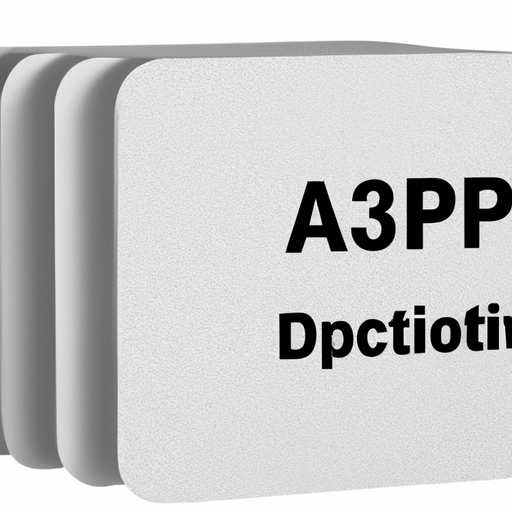What are the popular resistor models?
The Evolution of Renewable Energy: A Path Towards a Sustainable Future
I. Introduction
As the world grapples with the pressing challenges of climate change and environmental degradation, the importance of renewable energy has never been more pronounced. Renewable energy refers to energy derived from natural sources that are replenished at a faster rate than they are consumed. This includes solar, wind, hydro, biomass, and geothermal energy. The transition to renewable energy is crucial in reducing greenhouse gas emissions, promoting energy security, and fostering sustainable economic growth. This article will explore the historical context of energy sources, the various types of renewable energy, the role of technology, economic implications, global perspectives, future trends, and ultimately, the path towards a sustainable future.
II. Historical Context of Energy Sources
A. Traditional Energy Sources: Fossil Fuels and Their Impact
For centuries, fossil fuels—coal, oil, and natural gas—have been the backbone of global energy consumption. The Industrial Revolution marked a significant turning point, as these energy sources powered factories, transportation, and urbanization. However, the environmental consequences of fossil fuel usage have become increasingly evident. The burning of fossil fuels releases carbon dioxide and other greenhouse gases, contributing to global warming and air pollution. The historical reliance on these energy sources has led to a climate crisis that necessitates a shift towards more sustainable alternatives.
B. The Emergence of Renewable Energy
The quest for cleaner energy solutions began in earnest in the late 20th century. Early uses of renewable energy can be traced back to ancient civilizations that harnessed wind for sailing and water for milling grain. However, it was not until the 1970s energy crisis that significant investments were made in renewable technologies. Technological advancements, such as the development of photovoltaic cells for solar energy and improved wind turbine designs, have paved the way for modern renewable energy systems.
III. Types of Renewable Energy
A. Solar Energy
Solar energy harnesses the power of the sun through photovoltaic (PV) panels or solar thermal systems. PV panels convert sunlight directly into electricity, while solar thermal systems use sunlight to heat water or air for residential and commercial use. The benefits of solar energy include its abundance, low operating costs, and minimal environmental impact. However, challenges such as high initial costs, land use, and energy storage remain.
B. Wind Energy
Wind energy is generated by converting the kinetic energy of wind into electricity using wind turbines. These turbines can be installed onshore or offshore, with offshore wind farms often yielding higher energy outputs due to stronger and more consistent winds. The advantages of wind energy include its low emissions and the potential for job creation in manufacturing and maintenance. However, challenges such as noise, visual impact, and the need for suitable locations can hinder its expansion.
C. Hydropower
Hydropower is one of the oldest and most widely used forms of renewable energy. It generates electricity by harnessing the energy of flowing water, typically through dams. While hydropower is a reliable and efficient energy source, it raises environmental concerns, such as habitat disruption and changes in water quality. Sustainable practices, such as run-of-the-river systems and fish ladders, are being developed to mitigate these impacts.
D. Biomass and Biofuels
Biomass energy is derived from organic materials, such as plant and animal waste. It can be converted into biofuels, such as ethanol and biodiesel, or used directly for heating and electricity generation. Biomass plays a crucial role in waste reduction and can help lower carbon emissions when sourced sustainably. However, concerns about land use, food production, and emissions from combustion must be addressed.
E. Geothermal Energy
Geothermal energy taps into the Earth's internal heat to generate electricity or provide direct heating. This energy source is particularly effective in regions with high geothermal activity, such as volcanic areas. The potential of geothermal energy is significant, but challenges include high upfront costs and the need for suitable geological conditions.
IV. The Role of Technology in Renewable Energy
Technological innovations are driving the growth of renewable energy. Energy storage solutions, such as advanced batteries, are crucial for managing the intermittent nature of solar and wind energy. Smart grid technology enhances energy distribution and efficiency, allowing for better integration of renewable sources into existing power systems. Additionally, artificial intelligence and data analytics are optimizing energy use, predicting demand, and improving system reliability.
V. Economic Implications of Renewable Energy
The transition to renewable energy has significant economic implications. The renewable energy sector has become a major source of job creation, with millions of jobs in manufacturing, installation, and maintenance. Furthermore, the cost of renewable energy technologies has plummeted in recent years, making them increasingly competitive with fossil fuels. Government policies and incentives, such as tax credits and subsidies, are essential in promoting renewable energy adoption and driving investment.
VI. Global Perspectives on Renewable Energy
A. Case Studies of Countries Leading in Renewable Energy
Countries like Germany, Denmark, and China are at the forefront of the renewable energy revolution. Germany's Energiewende (energy transition) policy aims to phase out nuclear power and increase the share of renewables in its energy mix. Denmark has become a leader in wind energy, generating over 40% of its electricity from wind turbines. China, the world's largest producer of solar panels, is investing heavily in renewable energy to combat air pollution and reduce its carbon footprint.
B. International Agreements and Collaborations
International agreements, such as the Paris Agreement, play a crucial role in fostering global cooperation on climate change and renewable energy. These agreements set targets for reducing greenhouse gas emissions and encourage countries to invest in clean energy technologies. Collaborative efforts, such as the International Renewable Energy Agency (IRENA), promote knowledge sharing and best practices among nations.
C. Challenges Faced by Developing Countries
While many developed countries are making strides in renewable energy adoption, developing countries face unique challenges. Limited access to financing, inadequate infrastructure, and political instability can hinder the deployment of renewable technologies. However, innovative solutions, such as off-grid solar systems and community-based renewable projects, are emerging to address these challenges and provide sustainable energy access.
VII. Future Trends in Renewable Energy
A. Predictions for Renewable Energy Growth
The future of renewable energy looks promising, with predictions indicating that it will account for a significant portion of global energy consumption by 2050. As technology continues to advance and costs decrease, the adoption of renewables is expected to accelerate.
B. Emerging Technologies and Their Potential Impact
Emerging technologies, such as floating solar farms, advanced energy storage systems, and hydrogen fuel cells, have the potential to revolutionize the renewable energy landscape. These innovations can enhance energy efficiency, reduce costs, and expand the applicability of renewable energy sources.
C. The Role of Public Awareness and Education
Public awareness and education are vital in promoting renewable energy adoption. As individuals and communities become more informed about the benefits of renewable energy, they are more likely to support policies and initiatives that facilitate the transition to a sustainable energy future.
VIII. Conclusion
The transition to renewable energy is not just an environmental imperative; it is a pathway towards a sustainable future. By embracing renewable energy sources, we can reduce our carbon footprint, create jobs, and foster economic growth. It is essential for individuals, businesses, and governments to take action, invest in clean energy technologies, and support policies that promote sustainability. Together, we can envision a future powered by renewable energy, where the planet thrives, and future generations inherit a cleaner, healthier world.
IX. References
1. International Renewable Energy Agency (IRENA). (2021). Renewable Power Generation Costs in 2020.
2. United Nations Framework Convention on Climate Change (UNFCCC). (2015). The Paris Agreement.
3. U.S. Department of Energy. (2020). 2020 Wind Technologies Market Report.
4. World Bank. (2021). The World Bank and Renewable Energy.
5. International Energy Agency (IEA). (2021). World Energy Outlook 2021.
This article provides a comprehensive overview of the evolution of renewable energy, highlighting its significance, challenges, and future potential. By understanding the historical context and current trends, we can better appreciate the importance of transitioning to a sustainable energy future.






